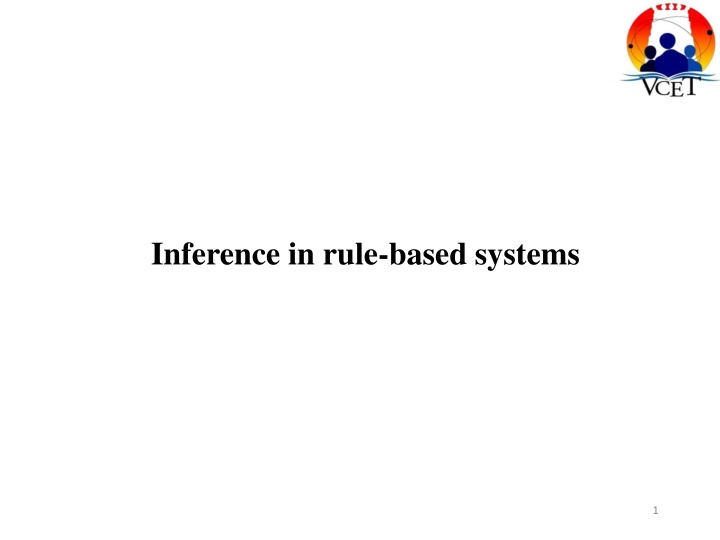
Inference in Rule-Based Systems
Explore the concepts of forward chaining and backward chaining in rule-based systems. Understand how each strategy works, from facts to conclusions and vice versa. See examples and learn when to use each method effectively.
Download Presentation

Please find below an Image/Link to download the presentation.
The content on the website is provided AS IS for your information and personal use only. It may not be sold, licensed, or shared on other websites without obtaining consent from the author. If you encounter any issues during the download, it is possible that the publisher has removed the file from their server.
You are allowed to download the files provided on this website for personal or commercial use, subject to the condition that they are used lawfully. All files are the property of their respective owners.
The content on the website is provided AS IS for your information and personal use only. It may not be sold, licensed, or shared on other websites without obtaining consent from the author.
E N D
Presentation Transcript
Inference in rule-based systems Two control strategies: forward chaining and backward chaining
Inference in rule-based systems Forward chaining: working from the facts to a conclusion. Sometimes called the data-driven approach. To chain forward, match data in working memory against 'conditions' of rules in the rule-base.
Inference in rule-based systems To chain forward, match data in working memory against 'conditions' of rules in the rule-base. When one of them fires, this is liable to produce more data. So the cycle continues
Inference in rule-based systems Backward chaining: working from the conclusion to the facts. Sometimes called the goal-driven approach. To chain backward, match a goal in working memory against 'conclusions' of rules in the rule-base. When one of them fires, this is liable to produce more goals. So the cycle continues.
Forward & backward chaining e.g. Here are two rules: If corn is grown on poor soil, then it will get blackfly. If soil hasn't enough nitrogen, then it is poor soil. Forward chaining: This soil is low in nitrogen; therefore this is poor soil; therefore corn grown on it will get blackfly. Backward chaining: This corn has blackfly; therefore it must have been grown on poor soil; therefore the soil must be low in nitrogen.
Forward & backward chaining Backward chaining is the best choice if: The goal is given in the problem statement, or can sensibly be guessed at the beginning of the consultation; or: The system has been built so that it sometimes asks for pieces of data (e.g. "please now do the gram test on the patient's blood, and tell me the result"), rather than expecting all the facts to be presented to it.
Forward & backward chaining Backward chaining This is because (especially in the medical domain) the test may be expensive, or unpleasant, or dangerous for the human participant so one would want to avoid doing such a test unless there was a good reason for it.
Forward & backward chaining Forward chaining is the best choice if: All the facts are provided with the problem statement; or: There are many possible goals, and a smaller number of patterns of data; or: There isn't any sensible way to guess what the goal is at the beginning of the consultation.
Forward & backward chaining Note also that a backwards-chaining system tends to produce a sequence of questions which seems focussed and logical to the user, a forward-chaining system tends to produce a sequence which seems random & unconnected. If it is important that the system should seem to behave like a human expert, backward chaining is probably the best choice.
Forward & backward chaining Some systems use mixed chaining, where some of the rules are specifically used for chaining forwards, and others for chaining backwards. The strategy is for the system to chain in one direction, then switch to the other direction, so that: the diagnosis is found with maximum efficiency; the system's behaviour is perceived as "human".
